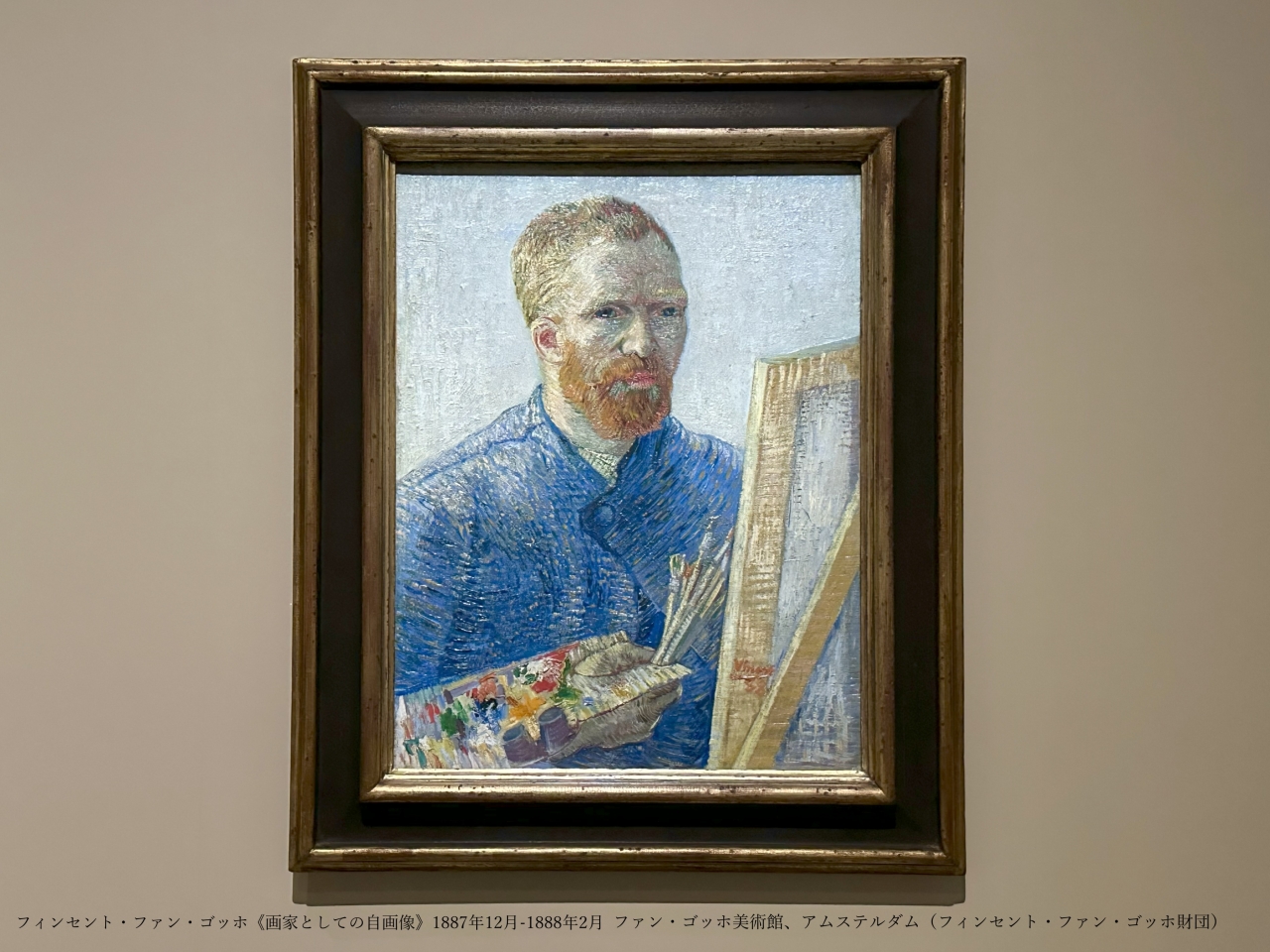
The exhibition "Van Gogh: A Painter's Dream Passed on by a Family" is currently being held at the Tokyo Metropolitan Art Museum , tracing the activities of the Van Gogh family, including the devoted support of the globally beloved painter Vincent van Gogh (1853-1890), his brother Theo, his wife Jo, and his nephew Vincent Willem, and showing how Vincent's dreams and works have been passed down to the present day.
The event will run from Friday, September 12th to Sunday, December 21st, 2025.
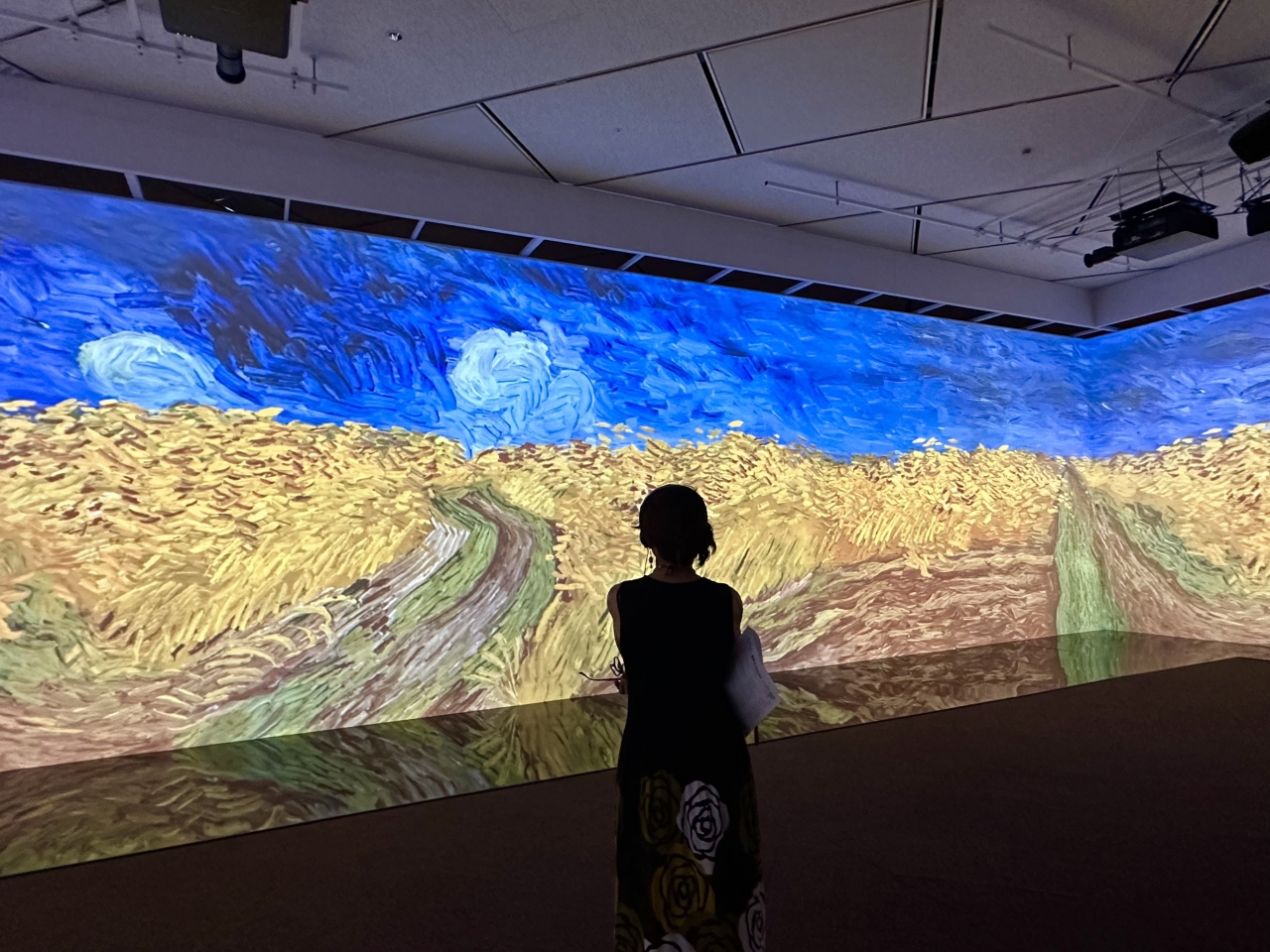
"Van Gogh Exhibition: A Painter's Dream Connected by a Family" venue photos
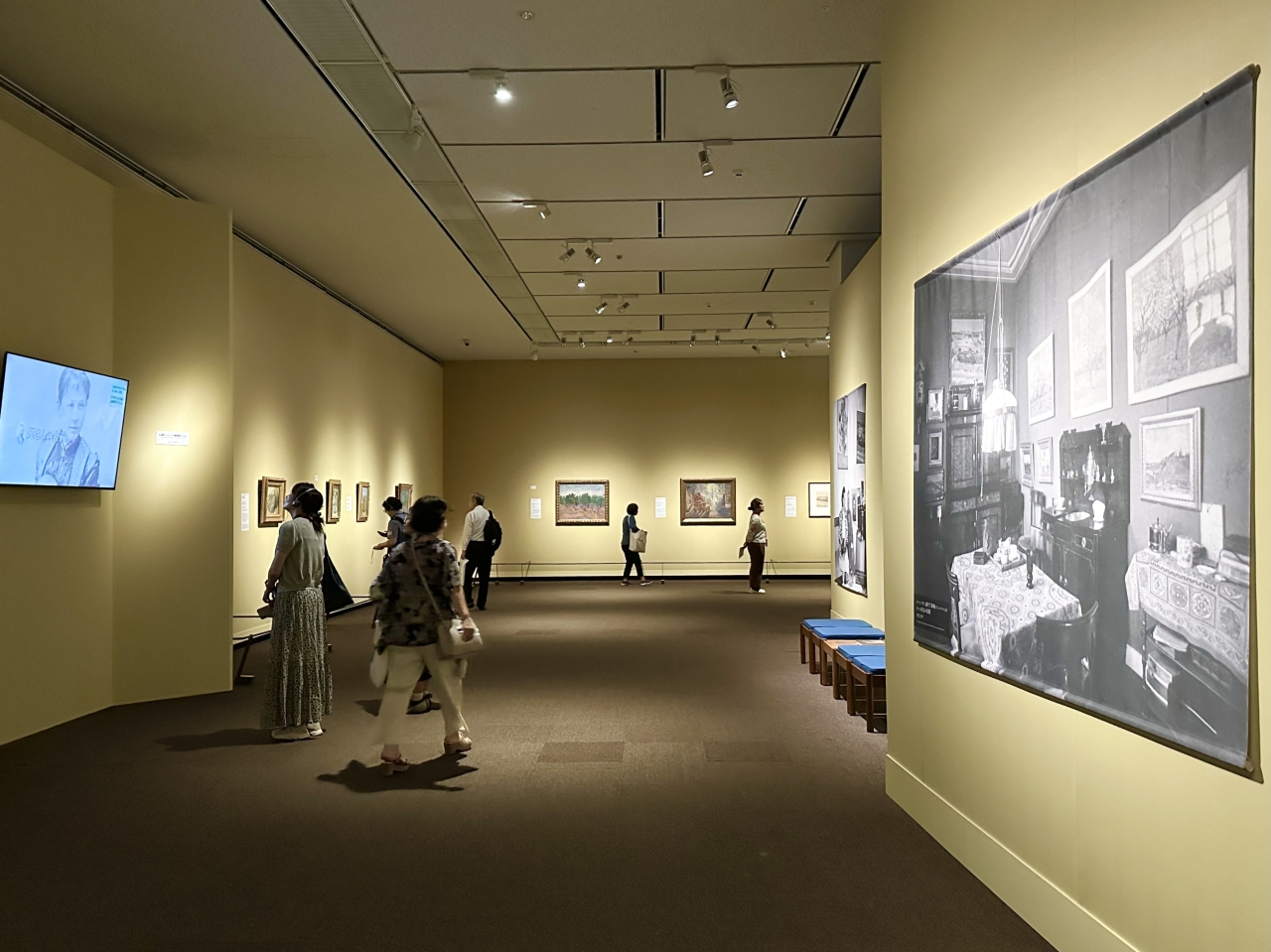
"Van Gogh Exhibition: A Painter's Dream Connected by a Family" venue photos
Vincent van Gogh started his career as a painter somewhat late, in 1880, at the age of 27, but he produced around 2,000 works in the short 10 years until his death in July 1890 at the age of 37. During his lifetime, Vincent was devotedly supported both emotionally and financially by his younger brother, close friend, and fellow artist, Theo (Theodorus van Gogh), but he passed away six months after his brother's death.
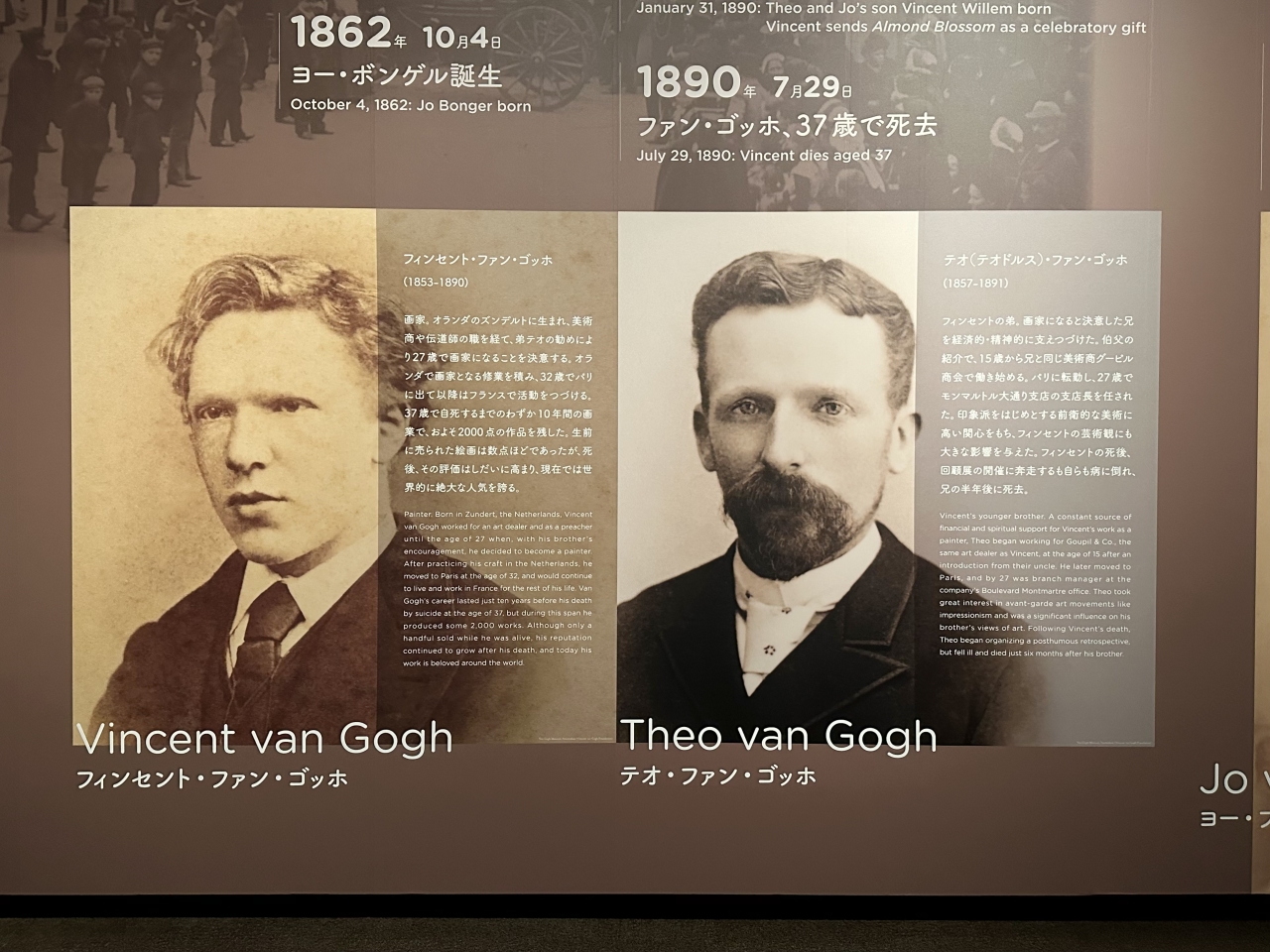
Vincent van Gogh and Theodorus van Gogh
Although Vincent was not unknown during his lifetime, it is well known that he only sold a few of his works. So how did he come to achieve such a brilliant reputation today as a painter whose works are treasured in art museums around the world?
Theo's wife, Johanna van Gogh-Bonger, who inherited the vast collection after his death, played a key role in this. Jo dedicated her life to bringing her brother-in-law's work to the world, working tirelessly to ensure that he was properly recognized as a painter by exhibiting his works in exhibitions, strategically selling them, and organizing and publishing his correspondence.
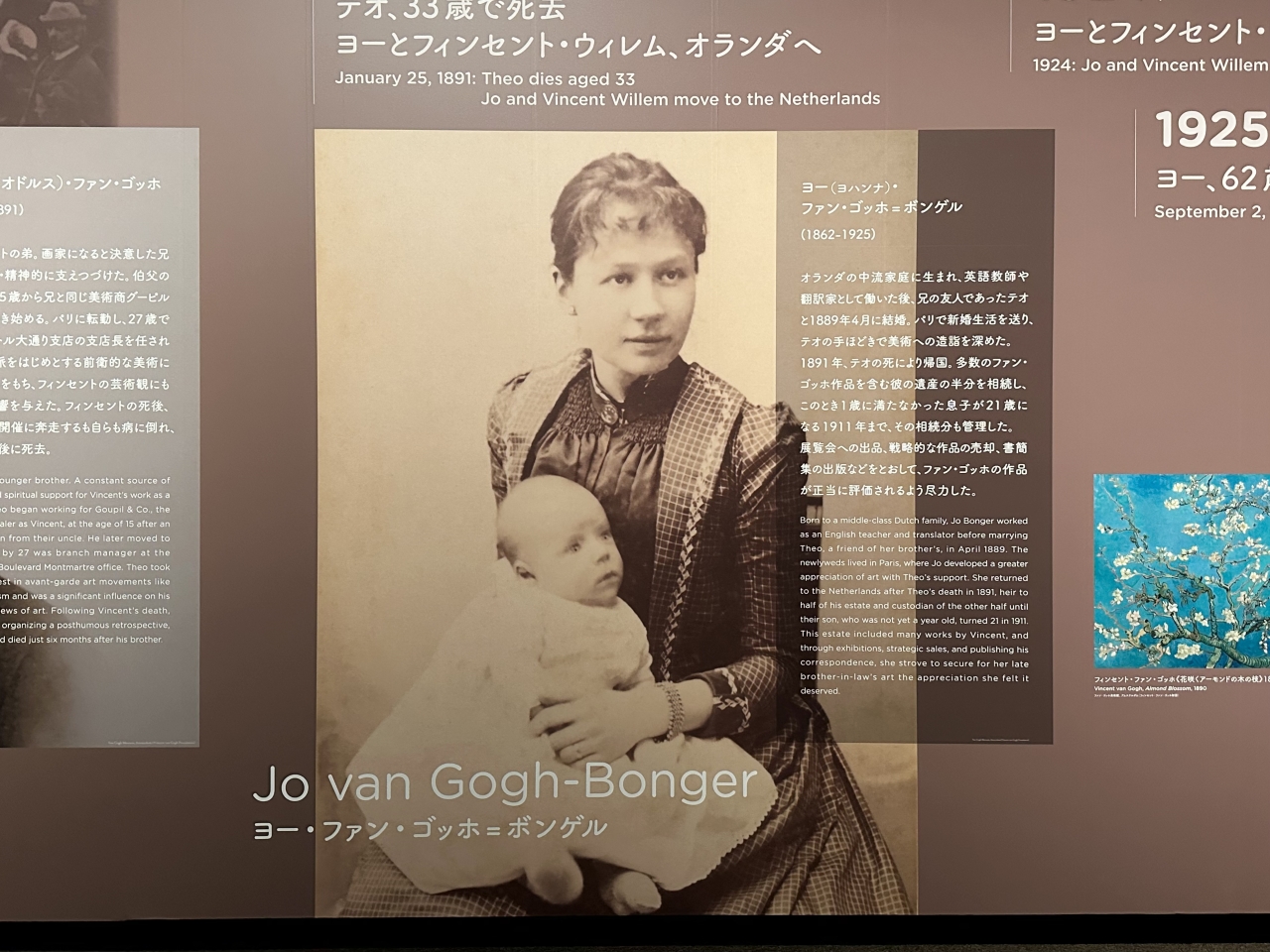
Johanna van Gogh-Bonger
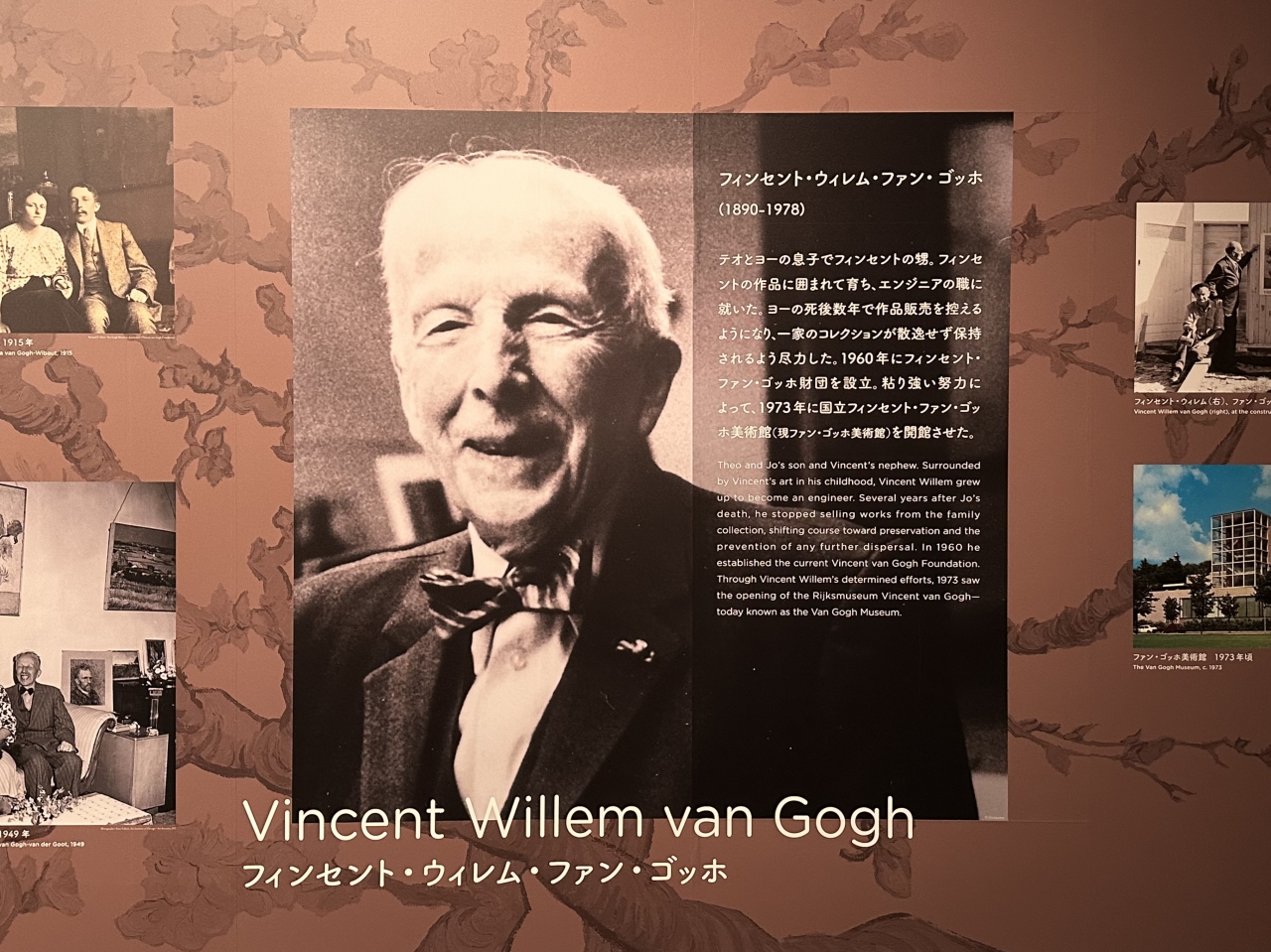
Vincent Willem van Gogh
Furthermore, Theo and Jo's son, Vincent Willem van Gogh, established the Vincent van Gogh Foundation in 1960 to prevent the collection from being dispersed, and was instrumental in opening the National Vincent van Gogh Museum (now the Van Gogh Museum), which has a generous policy on lending artworks.
This exhibition is the first in Japan to focus on this carefully handed-down family collection. It features over 30 of Vincent's oil paintings and drawings, primarily from the Van Gogh Museum's collection. In addition, the exhibition is divided into five chapters, showcasing oil paintings and drawings by Paul Gauguin and Édouard Manet, illustrated prints from British and French newspapers, and ukiyo-e prints, all of which reveal the interests of the Van Gogh brothers and the art trends of their time, as well as four handwritten letters by Vincent, which will be shown in Japan for the first time.
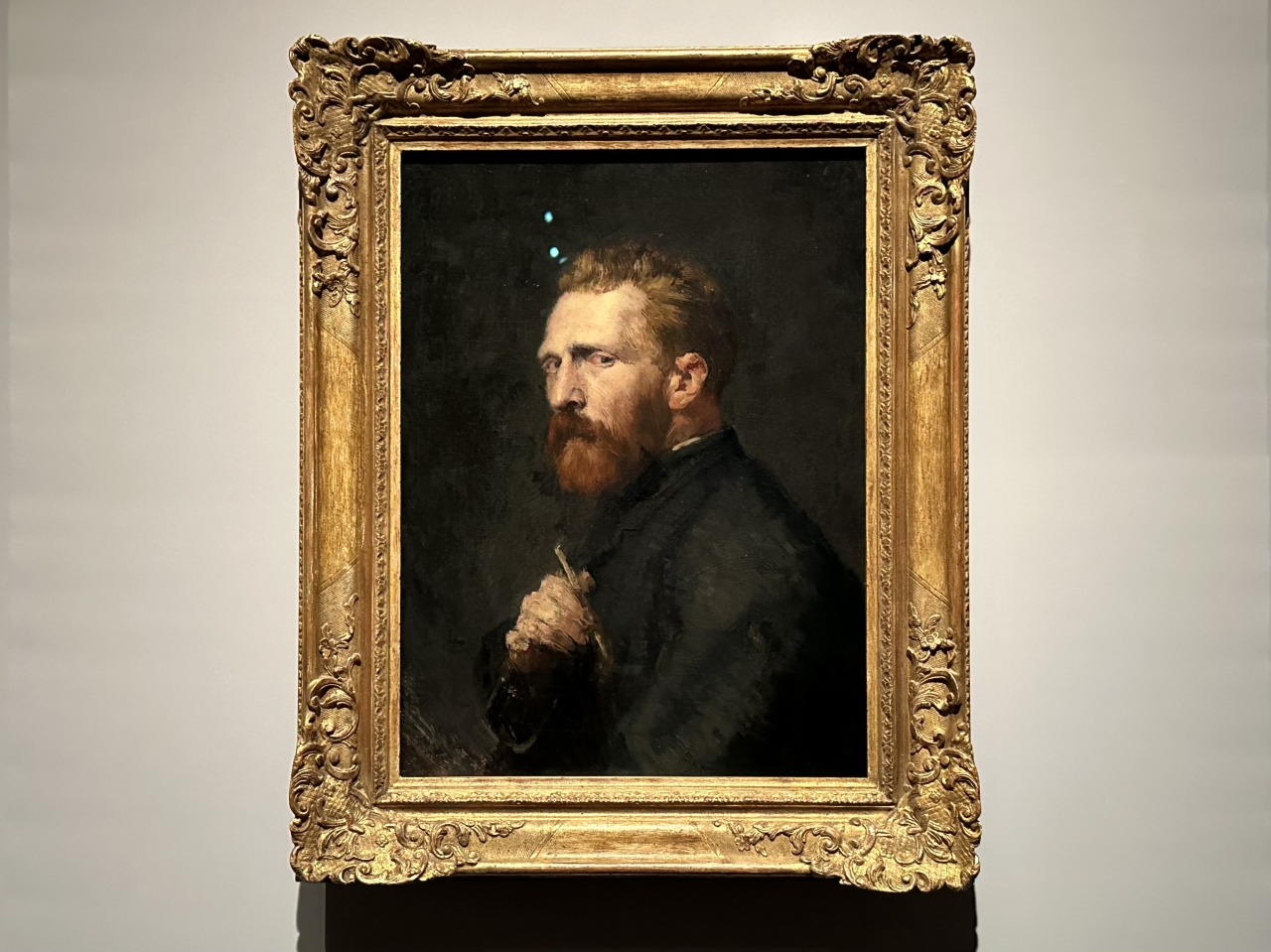
John Peter Russell, Portrait of Vincent van Gogh, 1886, Van Gogh Museum, Amsterdam (Vincent van Gogh Foundation)
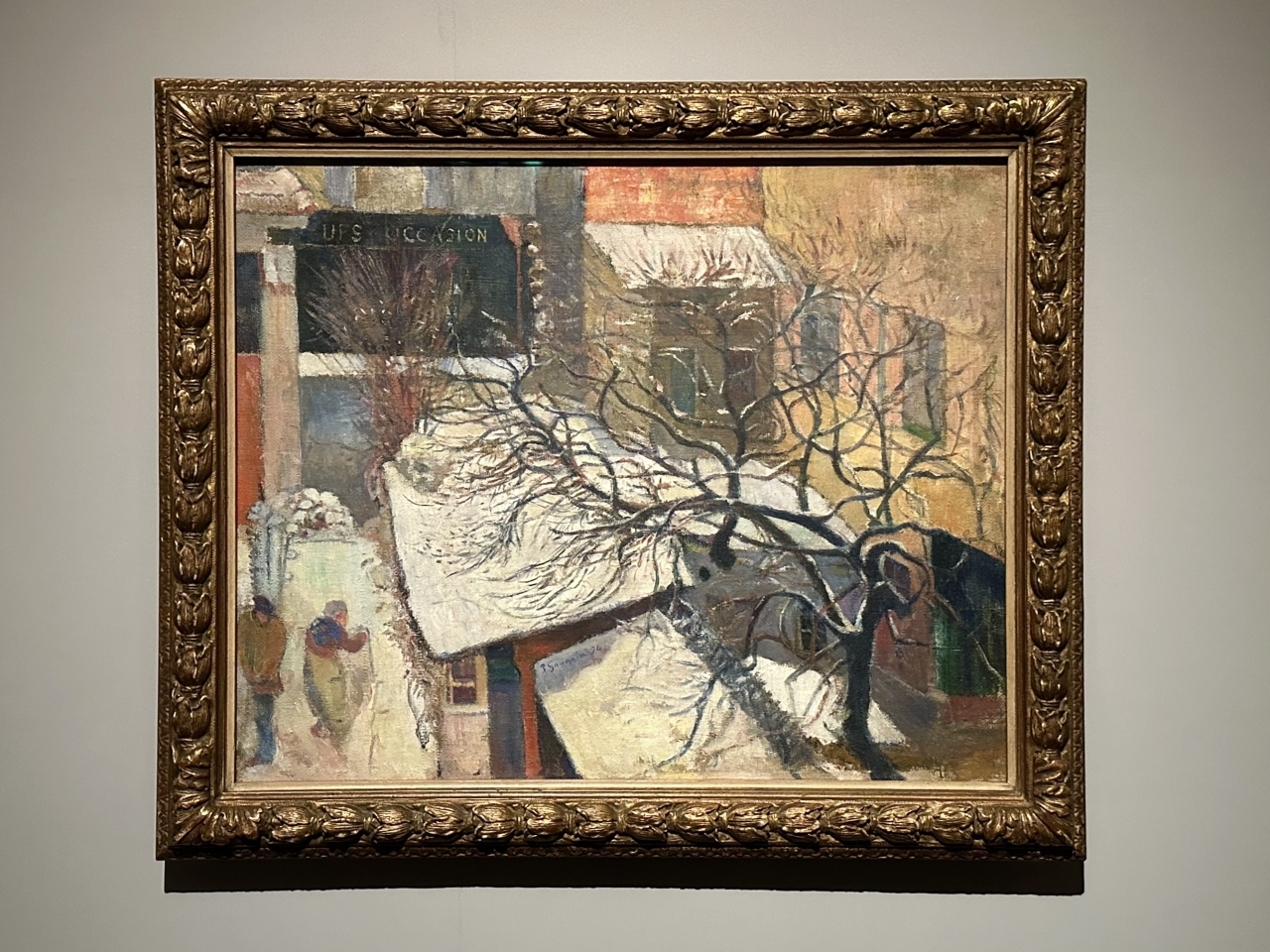
Paul Gauguin, Paris in the Snow, 1894, Van Gogh Museum, Amsterdam (Vincent van Gogh Foundation)
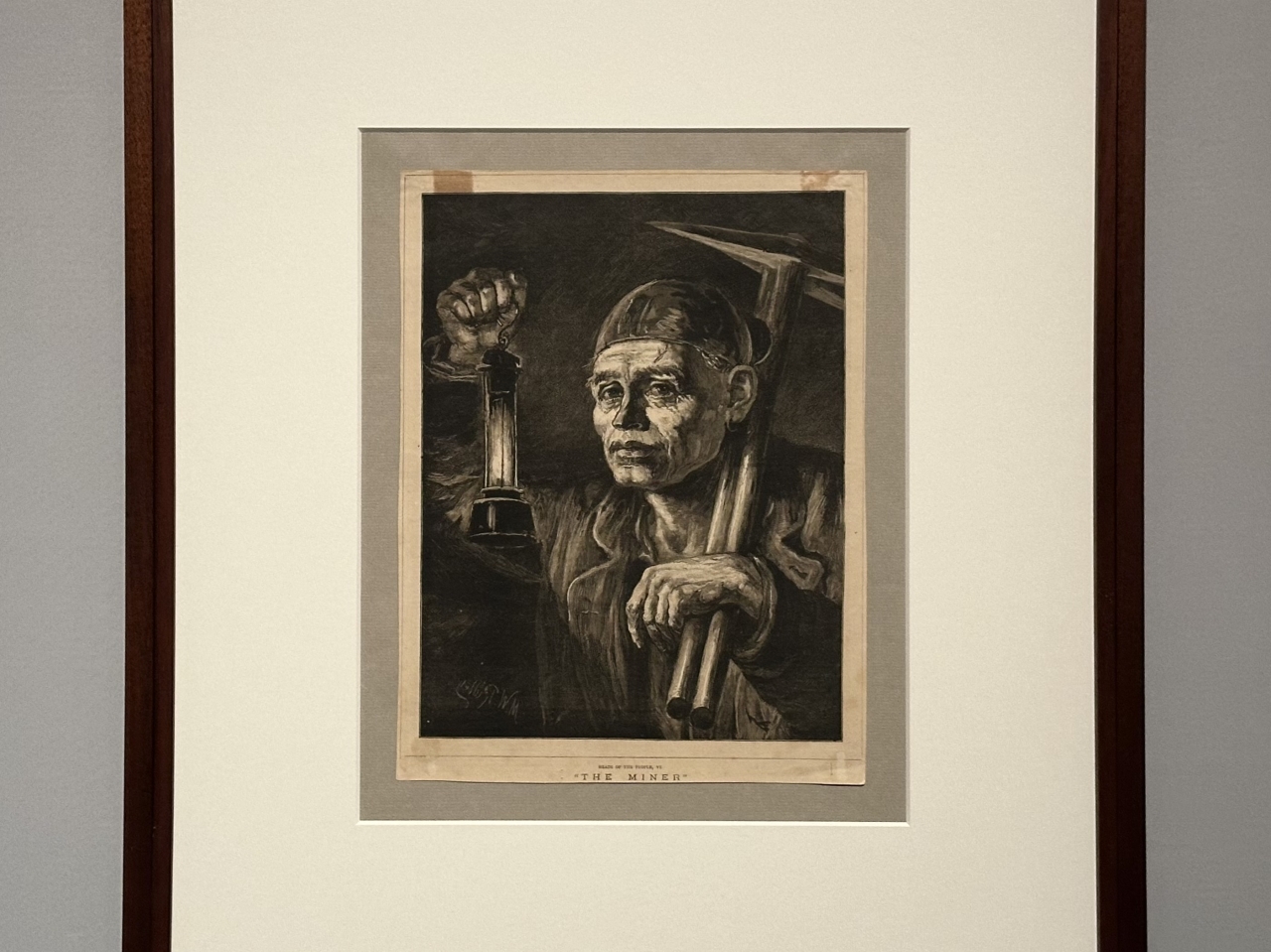
Matthew White Ridley, Miner, from "The Face of the People IV" in The Graphic, April 1876, Van Gogh Museum, Amsterdam (Vincent van Gogh Foundation)
Vincent aspired to be a painter, and from 1881 he honed his drawing and oil painting skills in The Hague and the rural village of Nuenen in the Netherlands. He established his modern style in Paris, where he moved in 1886, and went on to create innovative masterpieces in Arles, Saint-Rémy, and Auvers-sur-Oise, the place of his death in the south of France. The works on display at this exhibition allow visitors to trace the artist's career over those intense 10 years.
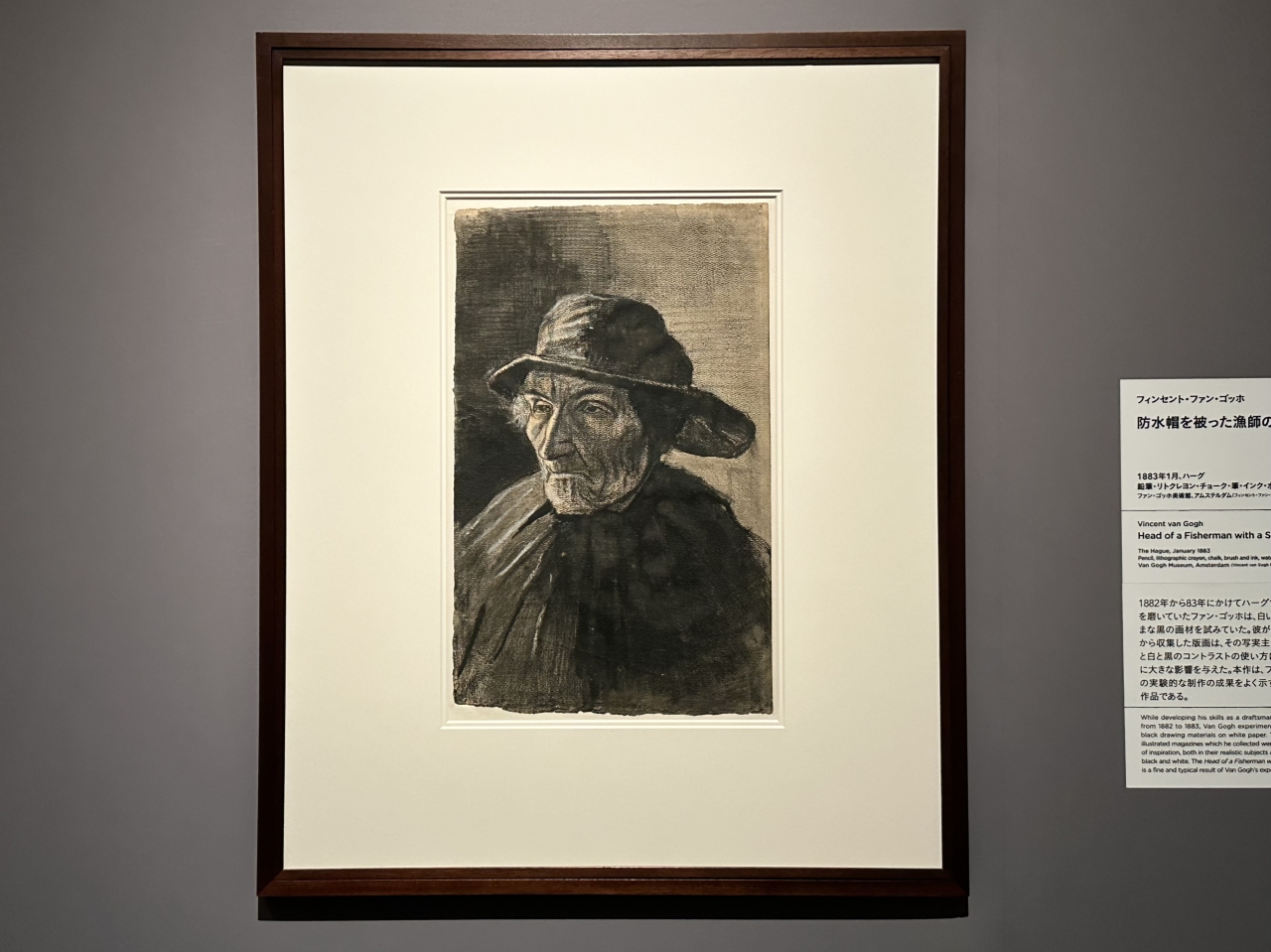
Vincent van Gogh, "Face of a Fisherman in a Waterproof Hat", January 1883, Van Gogh Museum, Amsterdam (Vincent van Gogh Foundation)
"Face of a Fisherman in a Waterproof Hat" (1883) was painted during his time in The Hague, when he was enthusiastically studying black media such as pencil, chalk, and ink, influenced by the realistic subject matter and black-and-white contrasts found in illustrated newspaper prints. During his stay in Nuenen, his interest in color theory grew, and he began actively working on still lifes as a way to practice working with color. "Vase with Lunaria" (1884) is one of his first botanical still lifes, produced in late autumn and early winter of 1884.
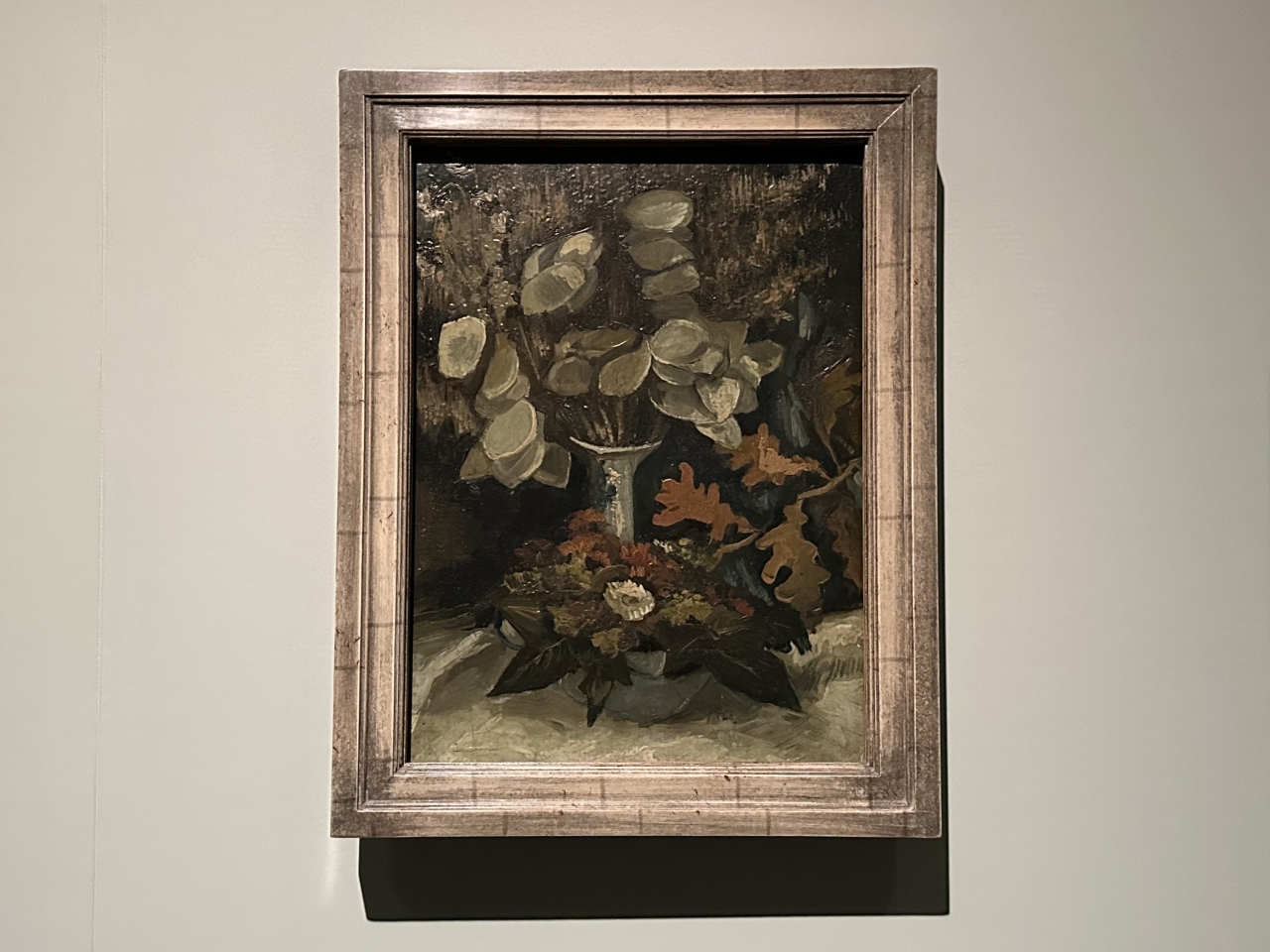
Vincent van Gogh, Vase with Lunaria, Autumn-Winter 1884, Van Gogh Museum, Amsterdam (Vincent van Gogh Foundation)
Upon arriving in Paris, he was astonished to find that the works of the new avant-garde painters were completely different from what he had imagined, and he began to move away from the dark tones seen in this work and to seek out new colors and brushwork. Taking inspiration from the painters he respected, such as Delacroix's colors and Monticelli's impasto technique, he produced over 30 still lifes of flowers in the summer of 1886 alone. One of these, Vase with Gladiolus and Aster Flowers (1886), features a distinctive background resembling overlapping crosses.
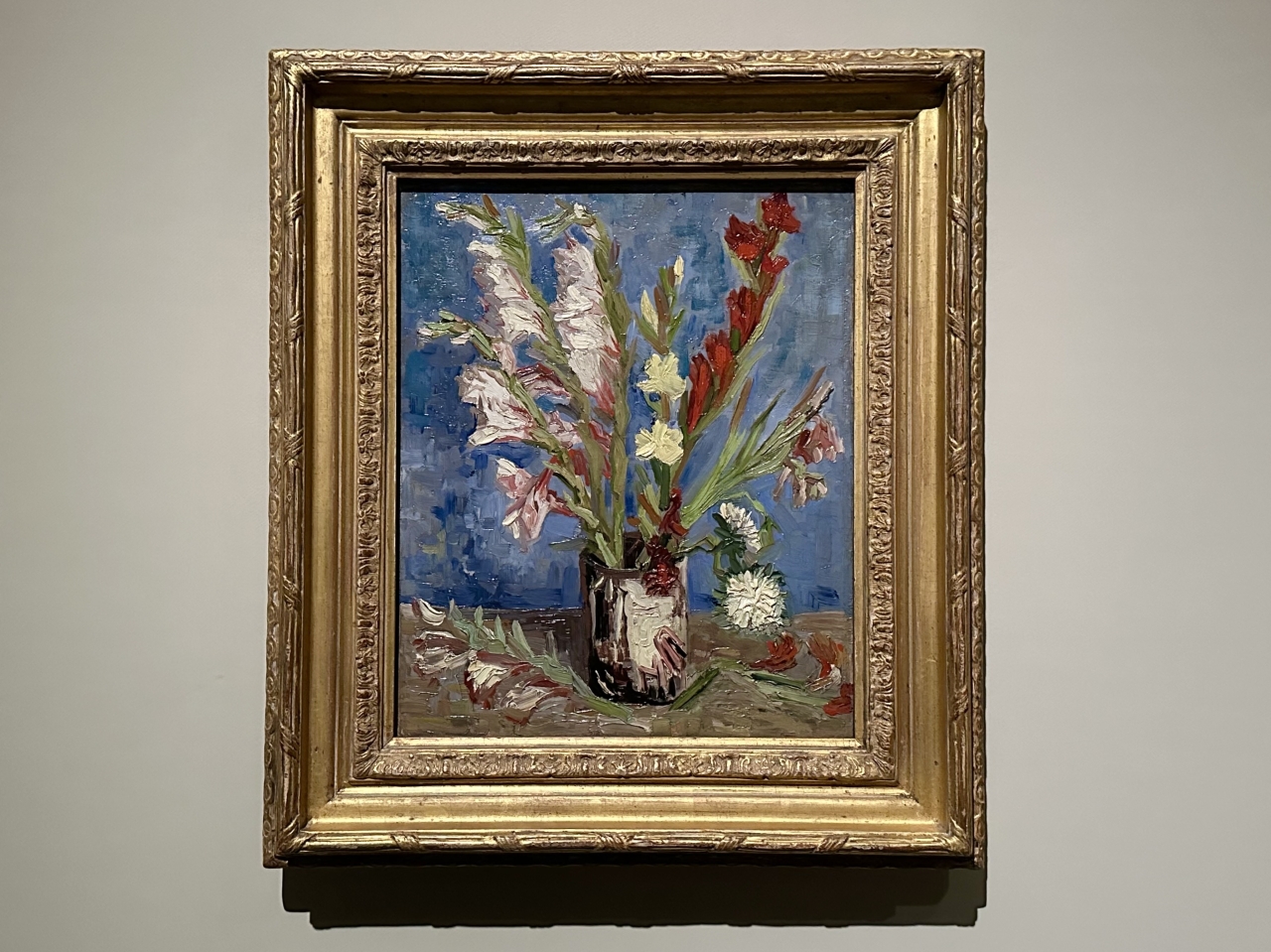
Vincent van Gogh, Vase with Gladiolus and Daisies, August-September 1886, Van Gogh Museum, Amsterdam (Vincent van Gogh Foundation)
If you turn your eyes to the highlight of this exhibition, the masterpiece Self-Portrait as a Painter (1887-1888) , which is said to be the last work he produced during his time in Paris, you will be amazed at how, in just two years, he had transformed into an extremely modern painter, compared to the oil paintings he produced during his time in the Netherlands.
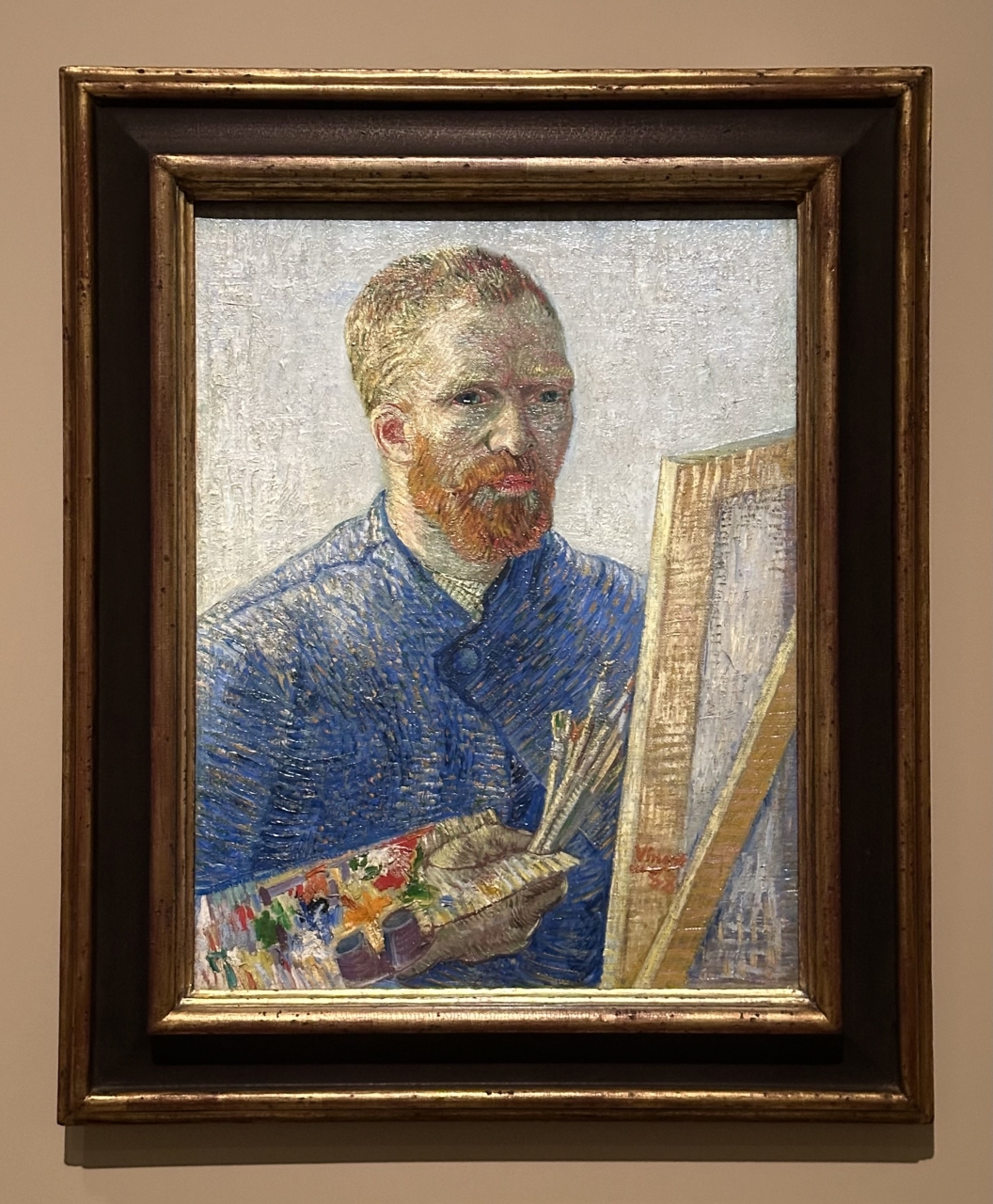
Vincent van Gogh, Self-Portrait as Artist, December 1887 – February 1888, Van Gogh Museum, Amsterdam (Vincent van Gogh Foundation)
The rich and skillful use of color, the fruit of his color theory studies in Paris, is born from the palette of colors that can be seen on the canvas, and the brushstrokes, imbued with unwavering confidence, spread vividly across the canvas. His posture is good, and his gaze, though slightly shadowed, is directed directly at the viewer, giving the impression of a strong will, perhaps a declaration of his pride as an artist, or perhaps a declaration of his resolve.
There is an anecdote about this work, about the first time Vincent and Yeo met in 1890, before Vincent left the Saint-Rémy asylum and headed for Auvers-sur-Oise. Yeo had heard many stories about Vincent's illnesses and poor health, so he imagined him to be a frail-looking man, but in his memoirs he wrote that he found him to be "a sturdy, broad-shouldered man with a healthy complexion, a smile on his face, and a very resolute demeanor." He added, "Of all his many self-portraits, this one, in which he is at his easel, is the one that most resembles him at that time."
Vincent himself seems to have had a negative impression of the painting, associating it with the Grim Reaper, but in any case, this work is considered one of the most important treasures of the Vincent van Gogh Foundation and, by extension, the Van Gogh Museum.
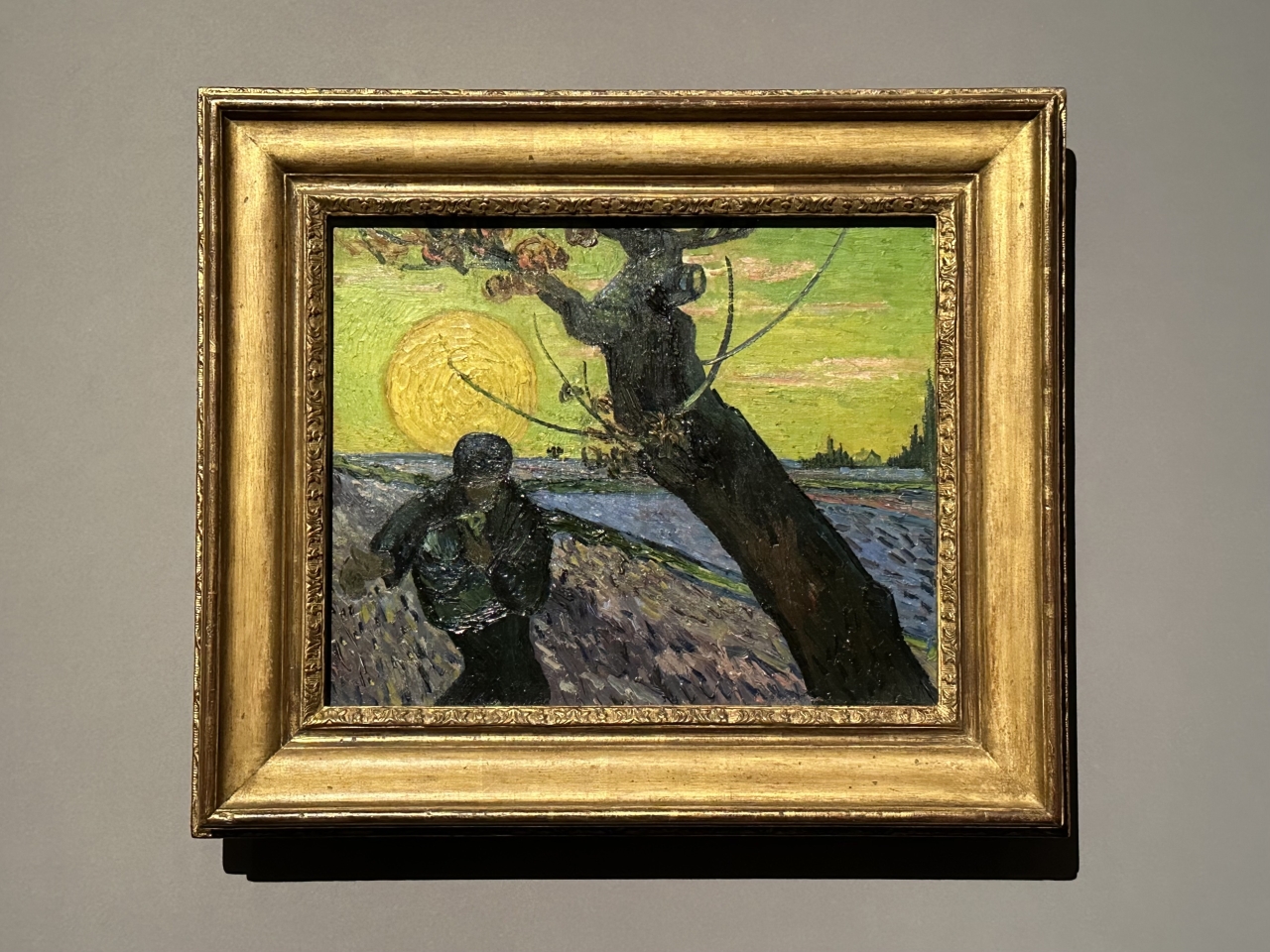
Vincent van Gogh, The Sower, November 1888, Van Gogh Museum, Amsterdam (Vincent van Gogh Foundation)
Vincent also admired Jean-François Millet, known as the "rural painter," from the early days of his career, and left behind many copies. His "The Sower" (1888), painted during his time in Arles, was based on Millet's work of the same name. Wanting to paint his own colorful "The Sower," he repeatedly made prototypes until he was satisfied with the composition of this work.
The influence of ukiyo-e is clearly evident in the treatment of motifs and the deformed depictions, such as the innovative composition that boldly crops the farmer below the knees, the tree trunk that is shown close up in the foreground with extreme perspective, and the huge sun that shines divinely on the farmer, and so the work is being exhibited alongside a collection of ukiyo-e prints.
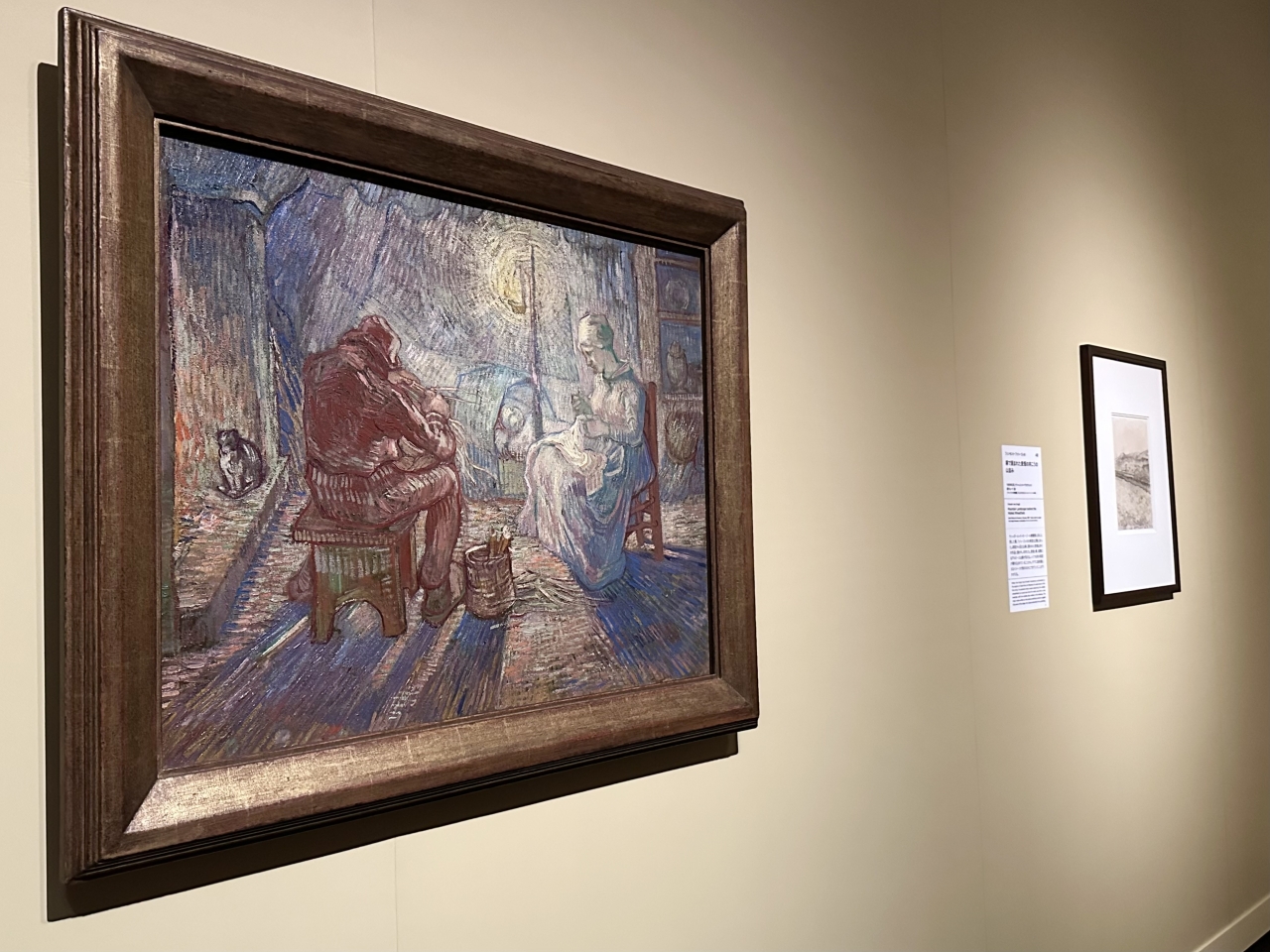
On the left is Vincent van Gogh's Night (after Millet), October-November 1889, Van Gogh Museum, Amsterdam (Vincent van Gogh Foundation)
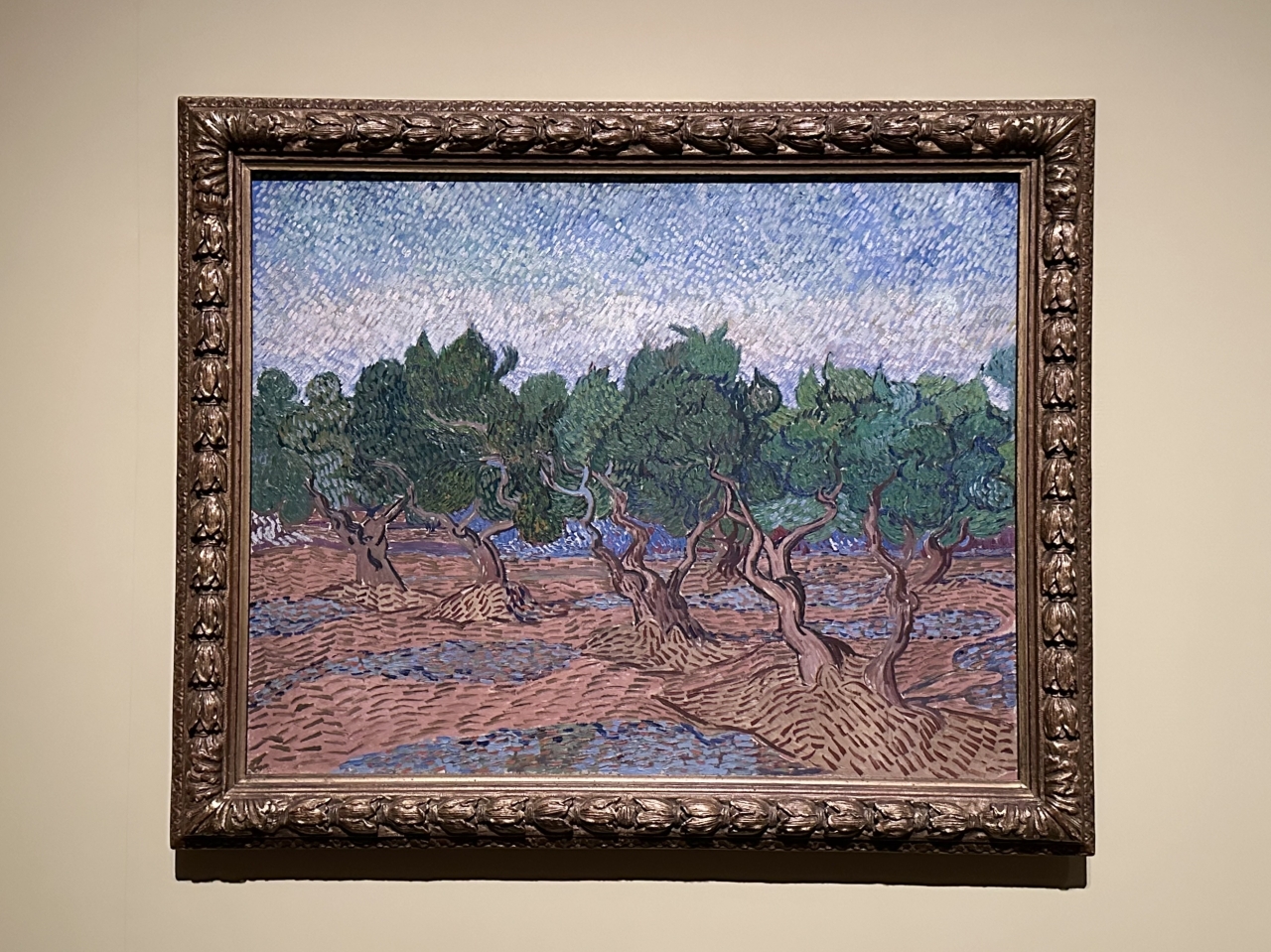
Vincent van Gogh, The Olive Garden, September 1889, Van Gogh Museum, Amsterdam (Vincent van Gogh Foundation)
At the same time, the exhibition also includes a section featuring works that Yeo sold, i.e., works outside the Van Gogh Museum's collection, in order to showcase his unparalleled entrepreneurial spirit and achievements in the art world .
Although Yo was originally an amateur in the field of art, after marrying Theo, she gradually became familiar with modern and contemporary art, including Van Gogh, the world of private collectors and museums, and the mechanisms of the art trade. After Theo's death, she regularly sold Vincent's works, but the economic reason of making a living for father and son was secondary; it was her ambitious goal to establish the reputation of Vincent, whom she believed to be a central figure in modern art.
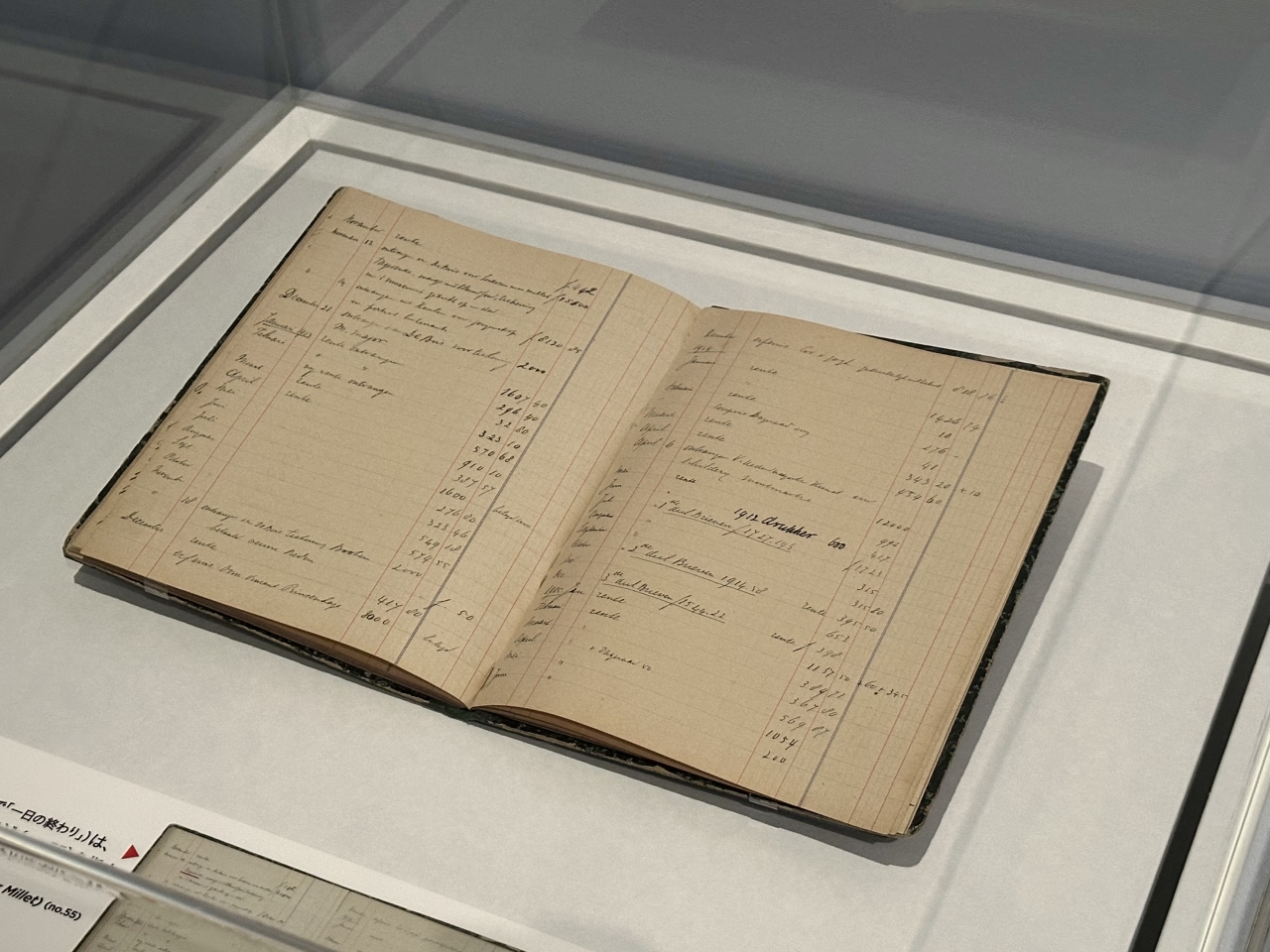
Theo van Gogh and Jo van Gogh-Bonger, Accounting Books of Theo van Gogh and Jo van Gogh-Bonger, 1889-1925, Van Gogh Museum (Vincent van Gogh Foundation)
The "accounting books" kept by Teo and Yeo shed light on Yeo's efforts. Initially, they only recorded the household income and expenditures, but after Teo's death, sales of his artworks were also recorded, leaving behind a vivid record of which works Yeo sold, when, to whom, and for how much. As a result of research and investigation, over 170 paintings and 44 works on paper have been identified, of which three oil paintings are on display in this exhibition.
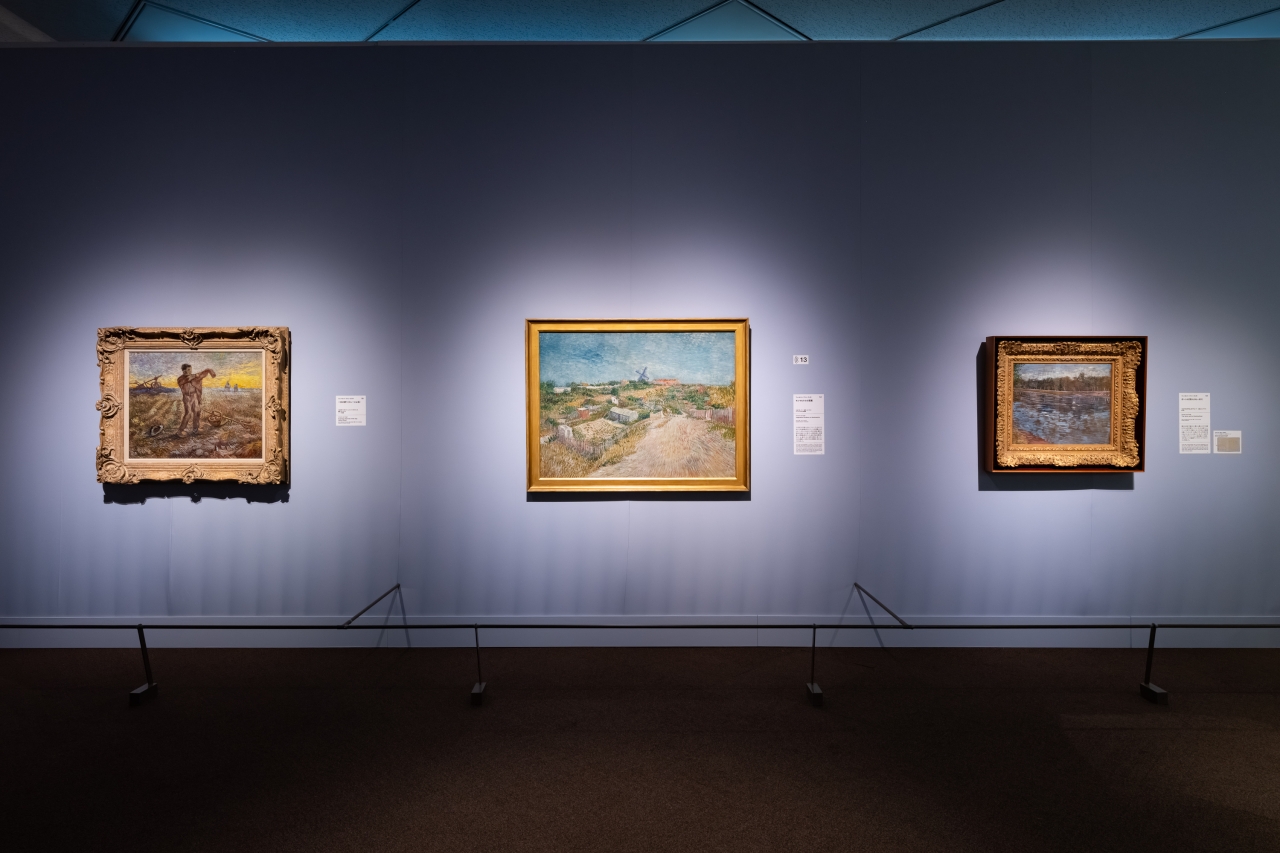
"Van Gogh Exhibition: A Painter's Dream Connected by a Family" venue photos
The Van Gogh Museum boasts the world's largest collection of Vincent's works, with approximately 200 oil paintings and 500 drawings, and it is said that if Yeo had not sold them, there would have been around 250 more. However, it was Yeo's strategic maneuvering that allowed his works to be included in collections around the world, making it relatively easy for those of us living in Japan to see the originals and properly appreciate them. Vincent's dream of "having his paintings seen by people living 100 years from now" has thus been realized.
The Van Gogh Museum's collection has gradually expanded, particularly since the late 1980s, thanks to donations and grants. While the collection has expanded to include works by the Barbizon School, the Hague School, Symbolism, Impressionism, and Post-Impressionism, as well as works on paper such as prints and posters, Vincent's works and letters have also been incorporated. This exhibition marks the first time that four letters addressed to Anton van Rappard, whose whereabouts had been unknown for a long time but were discovered in a private collection in 2006, will be coming to Japan.
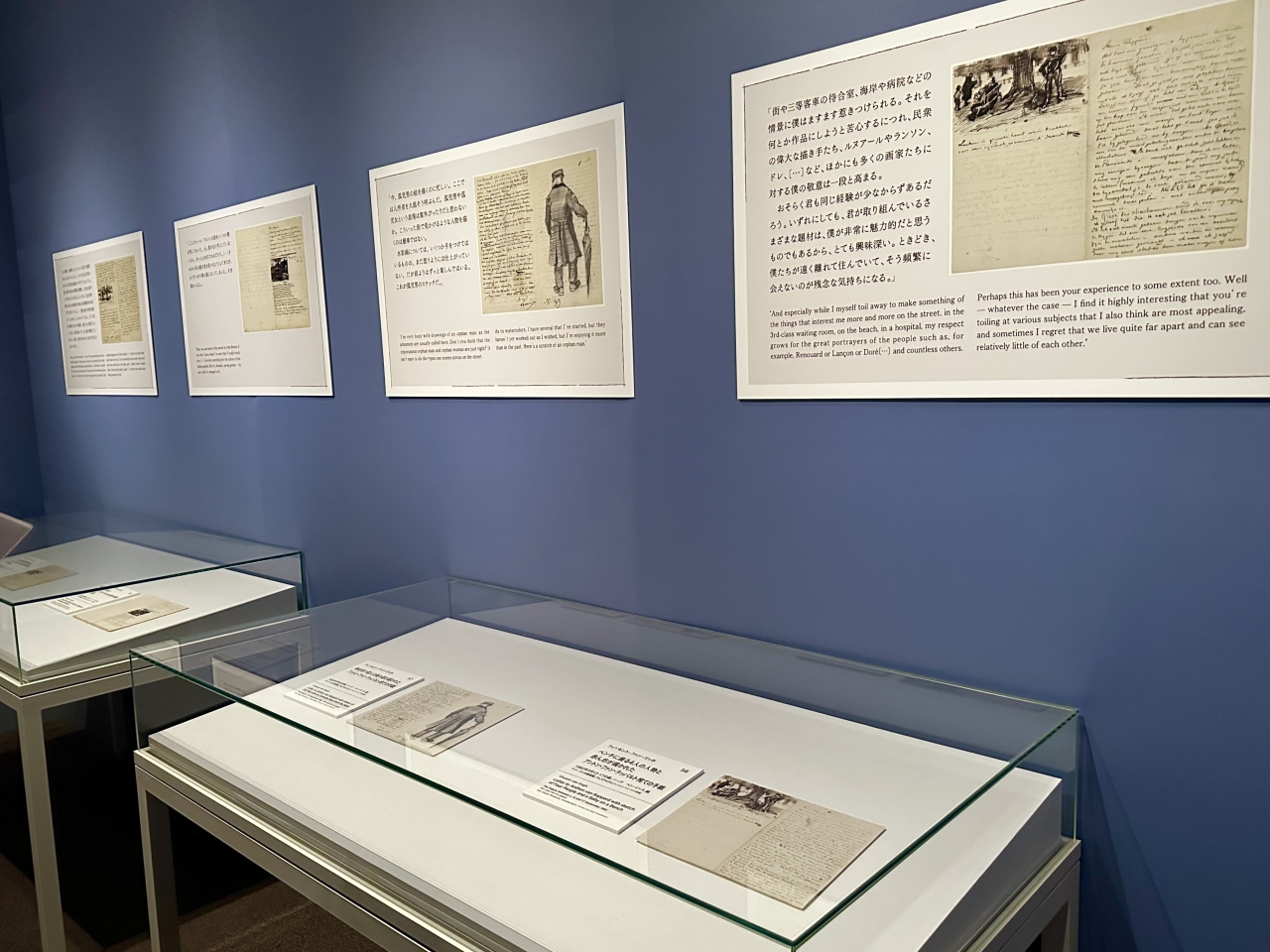
Exhibition of letters addressed to Anton van Rappard
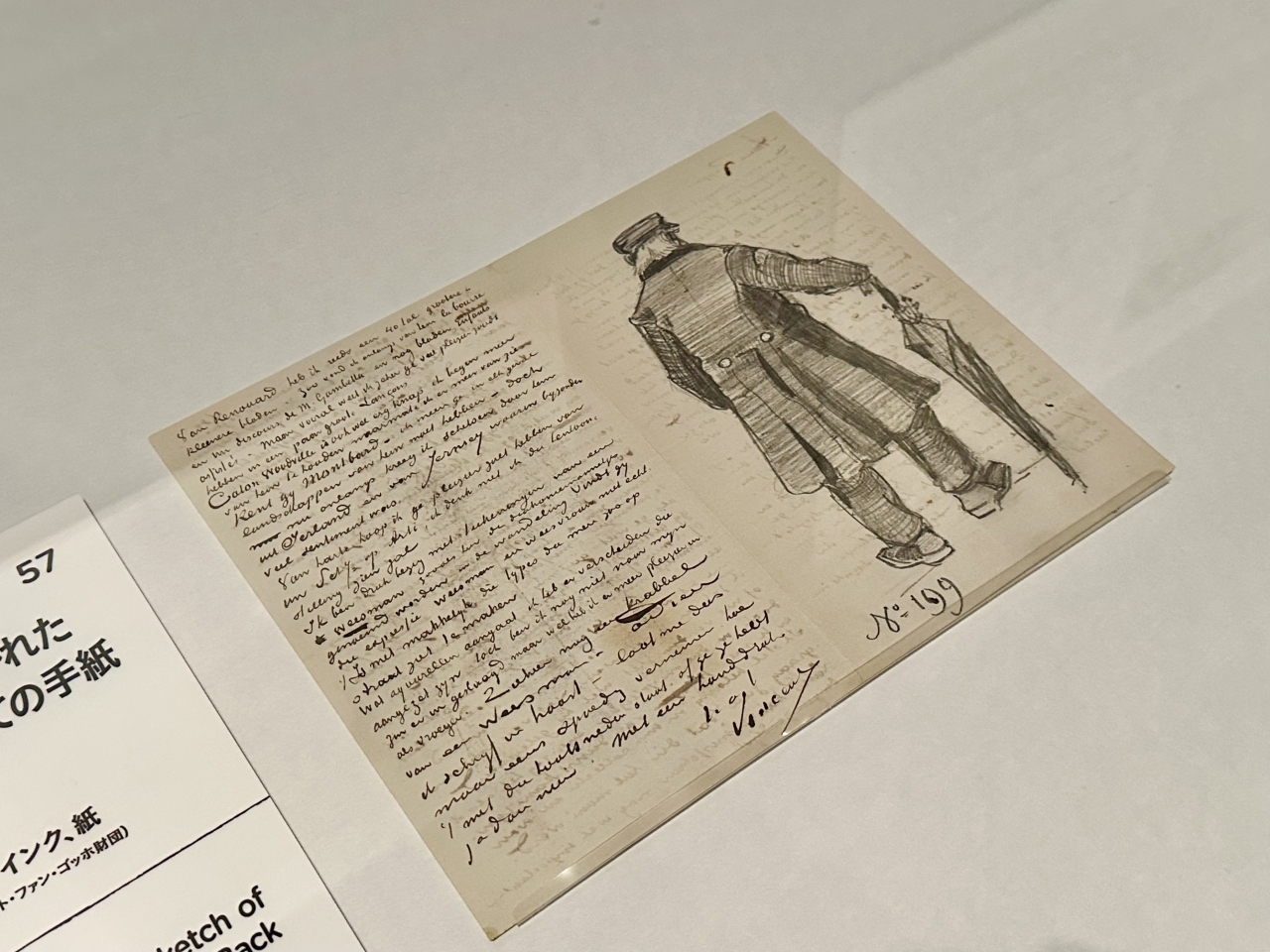
Vincent van Gogh, "Letter to Anton van Rappard with the Back View of an Old Man Holding an Umbrella," c. 23 September 1882, Van Gogh Museum, Amsterdam (Vincent van Gogh Foundation)
These are four pieces of paper from four letters addressed to Van Rappaardt, a senior painter whom Vincent met in Brussels, containing illustrations of people sitting on benches and old people he saw in a workhouse. These letters are prone to deterioration and are very rarely exhibited in exhibitions, making this an extremely rare opportunity.
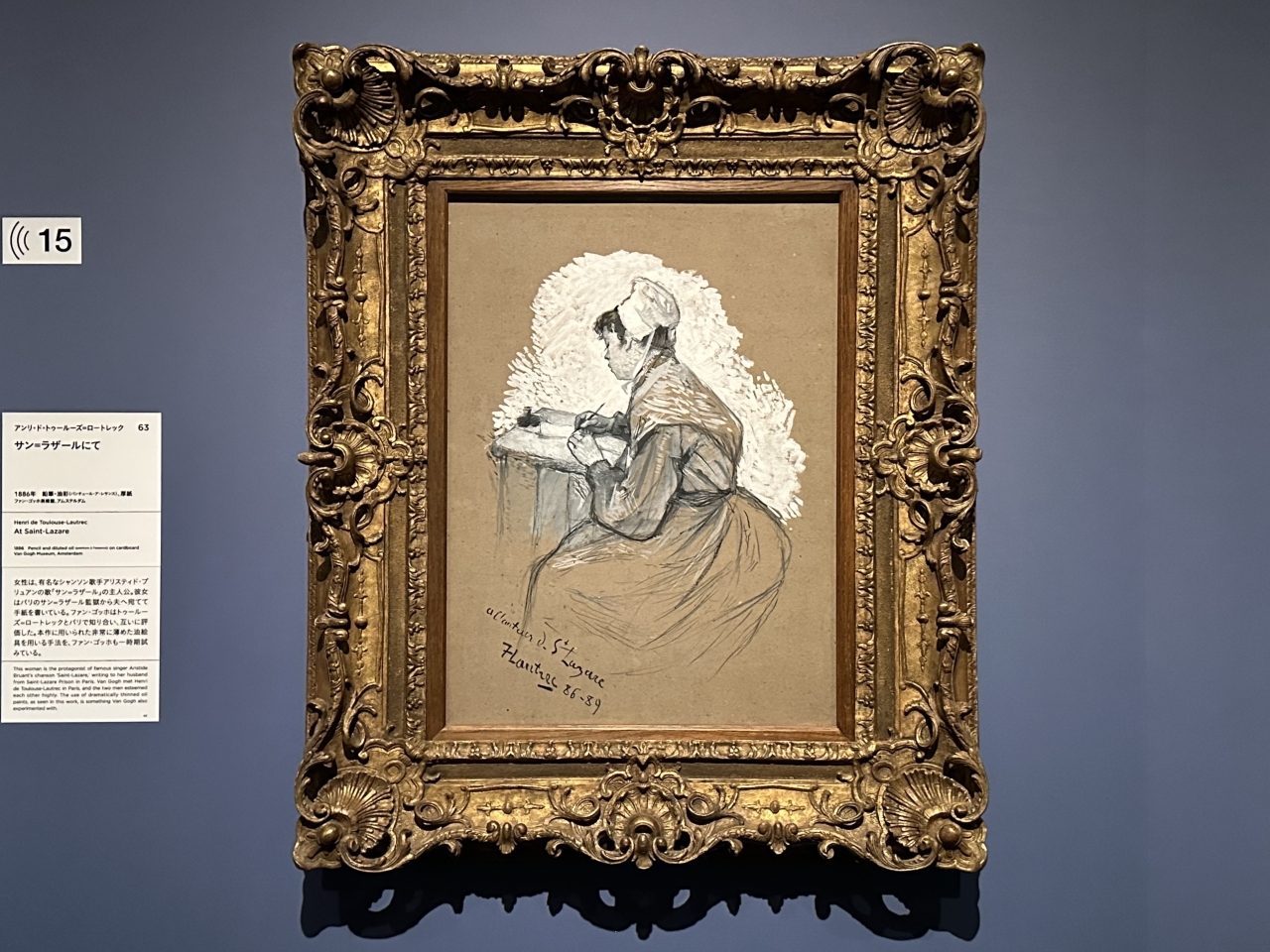
Henri de Toulouse-Lautrec, At Saint-Lazare, 1886, Van Gogh Museum, Amsterdam
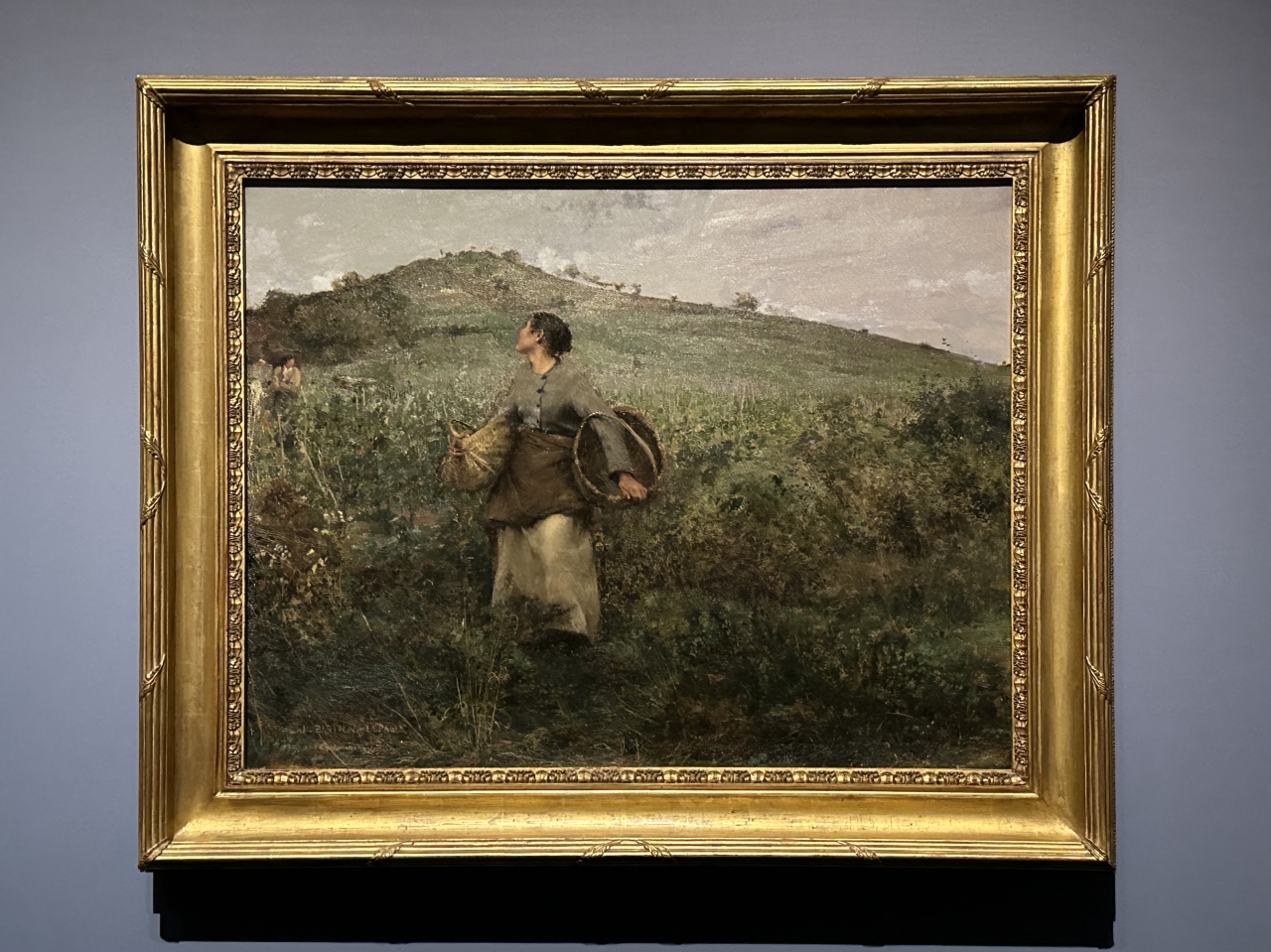
Jules-Bastien-Lepage, Grape Harvest, 1880, Van Gogh Museum, Amsterdam
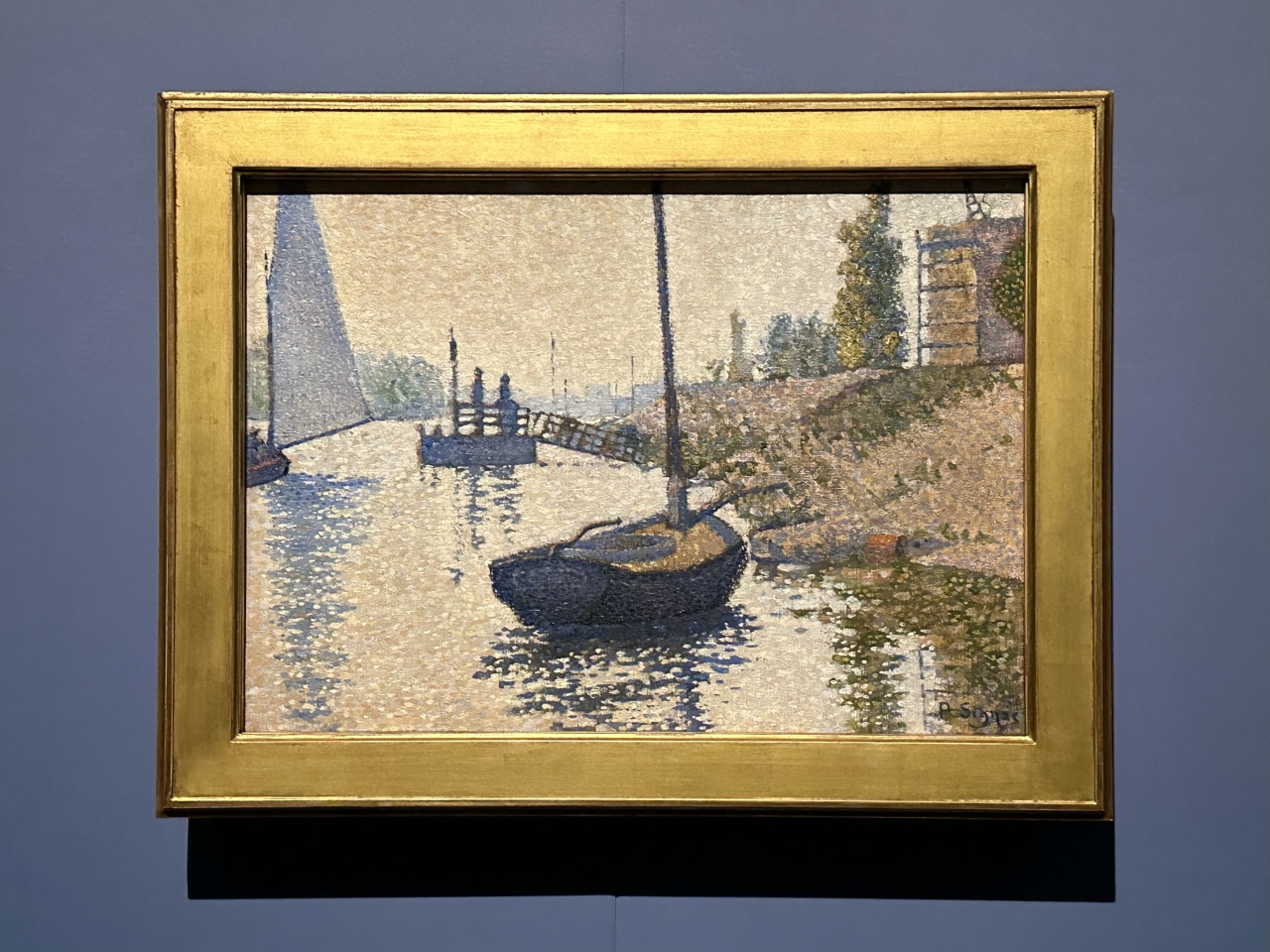
Paul Signac, The Flelicite's Pontoon, Asnières (Op. 143), 1886, Van Gogh Museum, Amsterdam
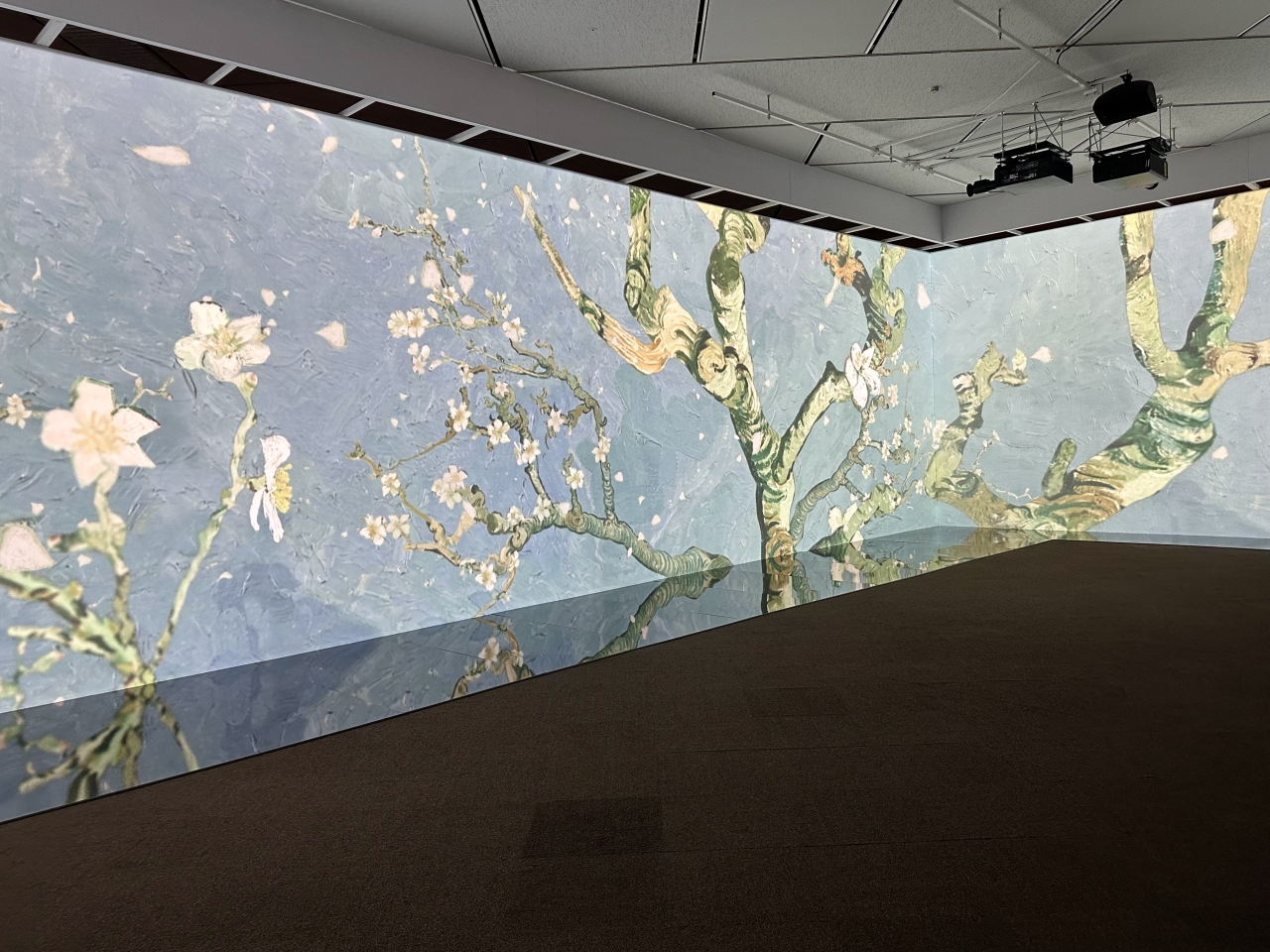
Immersive Corner
At the end of the exhibition, an "Immersive Corner" will be created, offering an experience of a space over 4m high and 14m wide. High-definition images of Van Gogh Museum masterpieces such as "Branches of Blossoming Almond Trees" and "Wheat Field with Crows Flying" will be projected on a giant monitor, along with a 3D scanned CG video of "Sunflowers" (SOMPO Museum of Art). Come and enjoy this immersive experience, where you can expect to make new discoveries from a bold perspective that is too close for the naked eye.
Overview of the "Van Gogh Exhibition: A Painter's Dream Continued by a Family"
| Dates | September 12th (Friday) – December 21st (Sunday), 2025 *Reservations are required for specified dates and times on weekends, holidays, and after December 16th (Tuesday). |
| venue | Tokyo Metropolitan Art Museum |
| Opening hours | 9:30-17:30 *Until 20:00 on Fridays (Entry until 30 minutes before closing) |
| Closed days | Monday, October 14th (Tue), November 4th (Tue), November 25th (Tue) *Open on Monday, October 13th (national holiday), Monday, November 3rd (national holiday), and Monday, November 24th (holiday) |
| Admission fee | Please check the official exhibition website. |
| Organizer | Tokyo Metropolitan Art Museum (Tokyo Metropolitan Foundation for History and Culture), NHK, NHK Promotion, Tokyo Shimbun |
| inquiry | (Hello Dial) 050-5541-8600 |
| Exhibition official website | https://gogh2025-26.jp |
*The content of this article is current as of the time of coverage. Please check the official exhibition website for the latest information.
<Past coverage reports>
[Tokyo Metropolitan Art Museum] Report on "The Joy of Making: DIY for Living." A chance to develop your own DIY spirit.
A list of past reports can be found here


